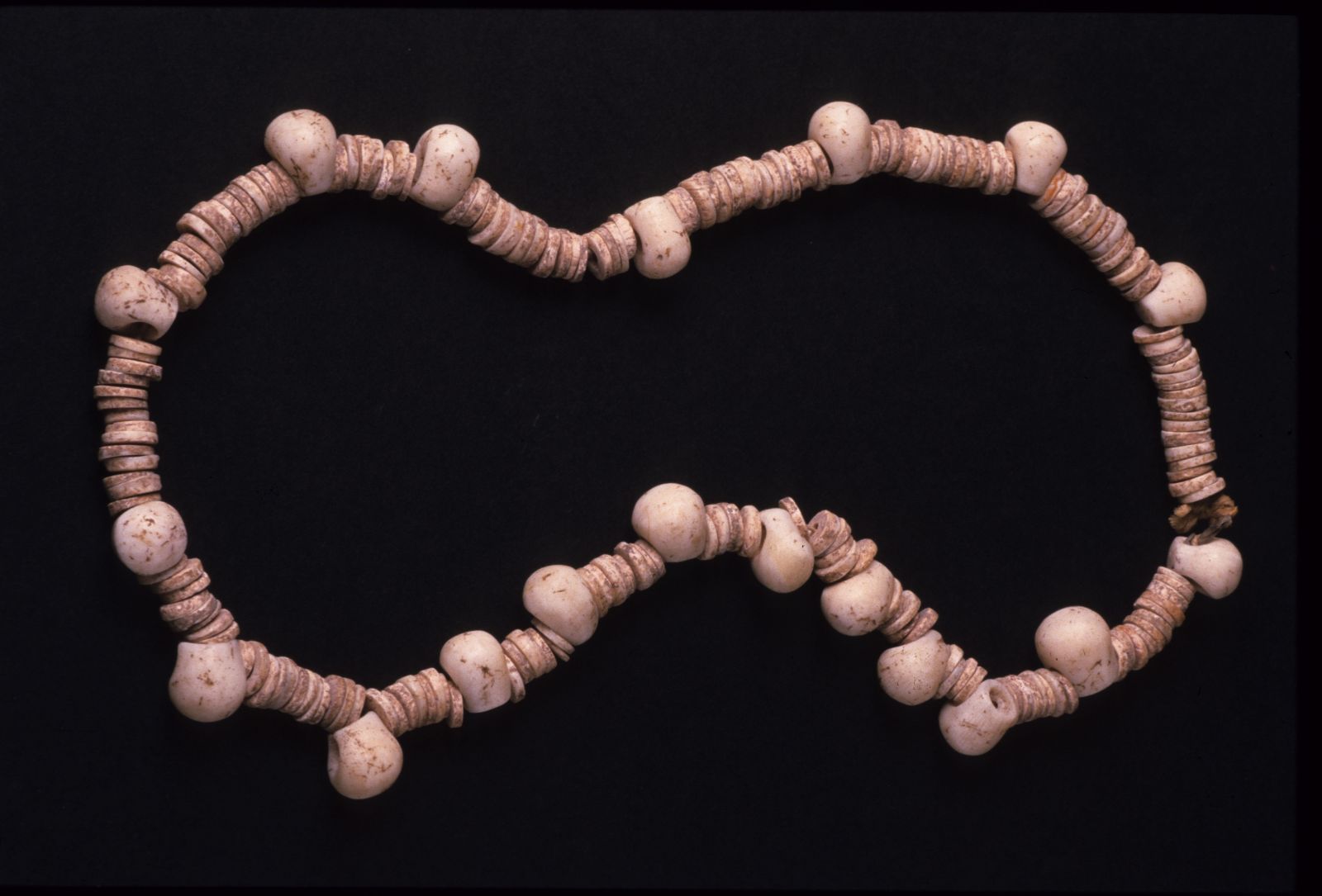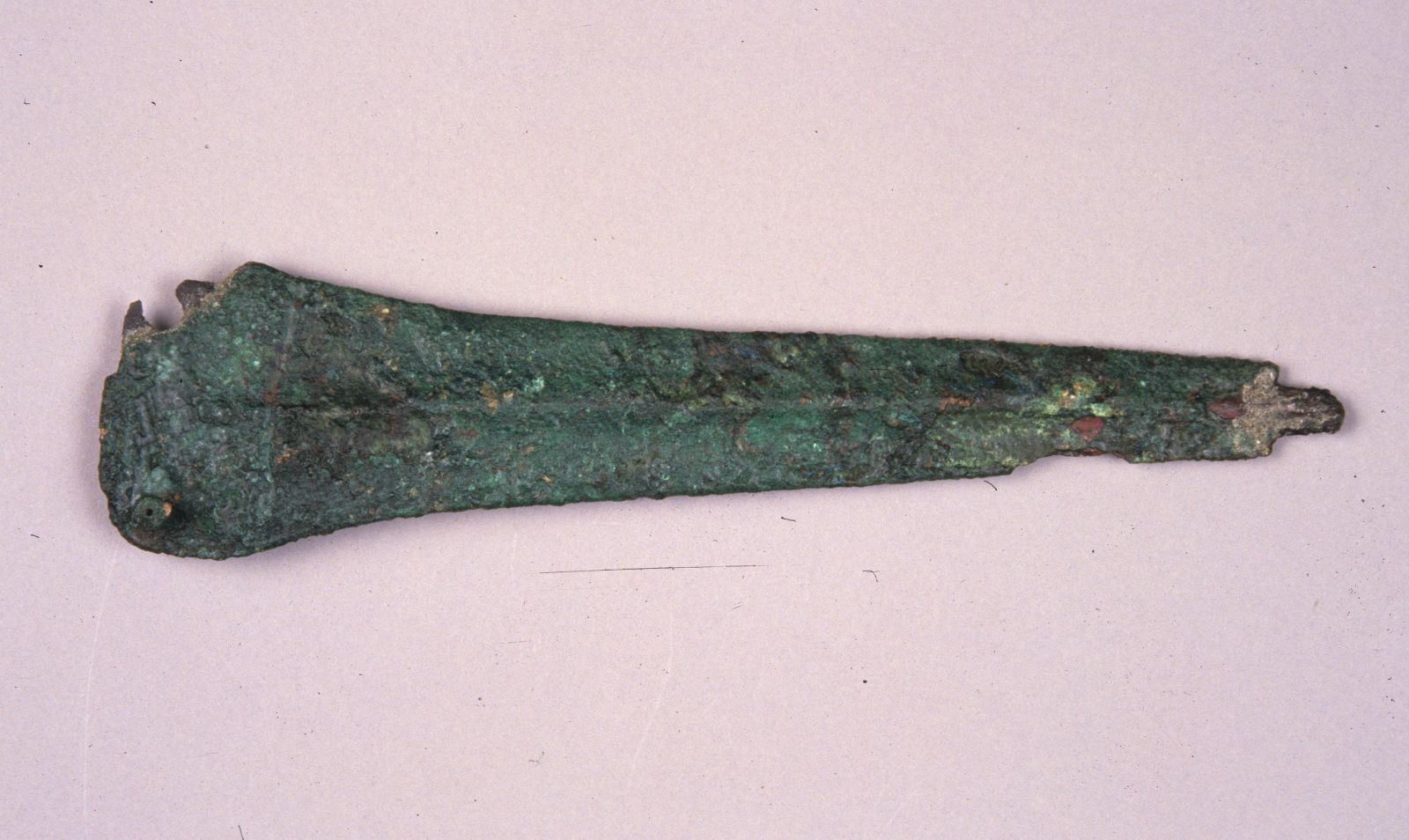PART INFORMATION
PREHISTORY
Name: Palaeolithic flint scraper from Ratlla del Bubo
.jpg)
Description: Scraper made of flint, a hard stone that generates sharp edges when fragmented. Palaeolithic tool used for scraping other materials, generally skins. The distal part has been retouched to create the cutting edge and the cortex has been kept in the proximal part to make it easier to grip.
Chronology: Upper Palaeolithic
Location: Ratlla del Bubo, Crevillent
Material: Flint
Technique: Carving and retouching
Dimensions: Length, 35mm; width, 27mm.
Name: Cova del Fum stone pendant

Description: A limestone necklace composed of 209 beads, 190 discoidal and 19 ellipsoidal. The taste for personal adornment was widespread during the Neolithic period. It is a sign of social prestige and is usually found accompanying the deceased in the form of a trousseau.
Chronology: Chalcolithic
Location: Cova del Fum, Alicante.
Material: Limestone
Name: Bronze Age rivet dagger from the Laderas del Castillo site

Description: A bronze dagger made using the mould-casting technique. It was attached to a hilt by rivets. It was long and narrow, triangular in shape, with straight edges and a smooth central rib. Its function may have been more symbolic, as an element of prestige, than practical.
Chronology: Argaric Bronze Age, (2300-1600 BC.)
Location: Furgús Collection (slopes of the castle), Callosa de Segura
Material: Bronze
Technique: Casting and riveting
Dimensions: Length, 21.4cm; width, 5.1cm; thickness, 2.05cm. Weight: 140.9g.
.
Name: Cántaro de la Cueva de En Pardo (Singing pitcher of the Cave of En Pardo)
Description: This is a ceramic vessel, specifically a large pitcher, with an ellipsoidal body, a slightly curved cylindrical neck and a conical base. The rim is thickened towards the outside. The vessel has two ribbon handles, vertically oriented, arranged approximately symmetrically and located in the upper third of the body.
The vessel is decorated in two ways. On the one hand, there are digitisations (fingerprints) on the rim, on one of the handles and on the base. There is also combed decoration, which is the result of running a spiked comb through the soft paste of the piece.
Pottery appeared in the Neolithic period, together with the discovery of agriculture and livestock farming, and with them, sedentary life.
Chronology: Middle Neolithic, (4900-4600 BC.)
Location: Cova d'En Pardo, Planes
Material: Ceramics
Technique: Hand modelled, decorated with comb and digitisations.
Dimensions: Height, 46.5cm; rim diameter, 13.3cm; maximum diameter, 32cm.

